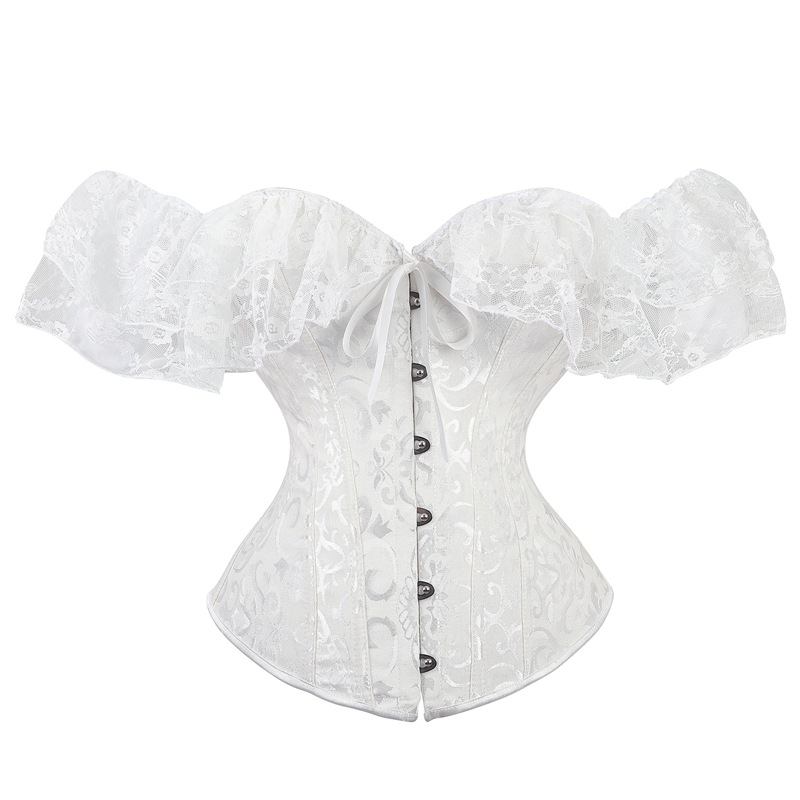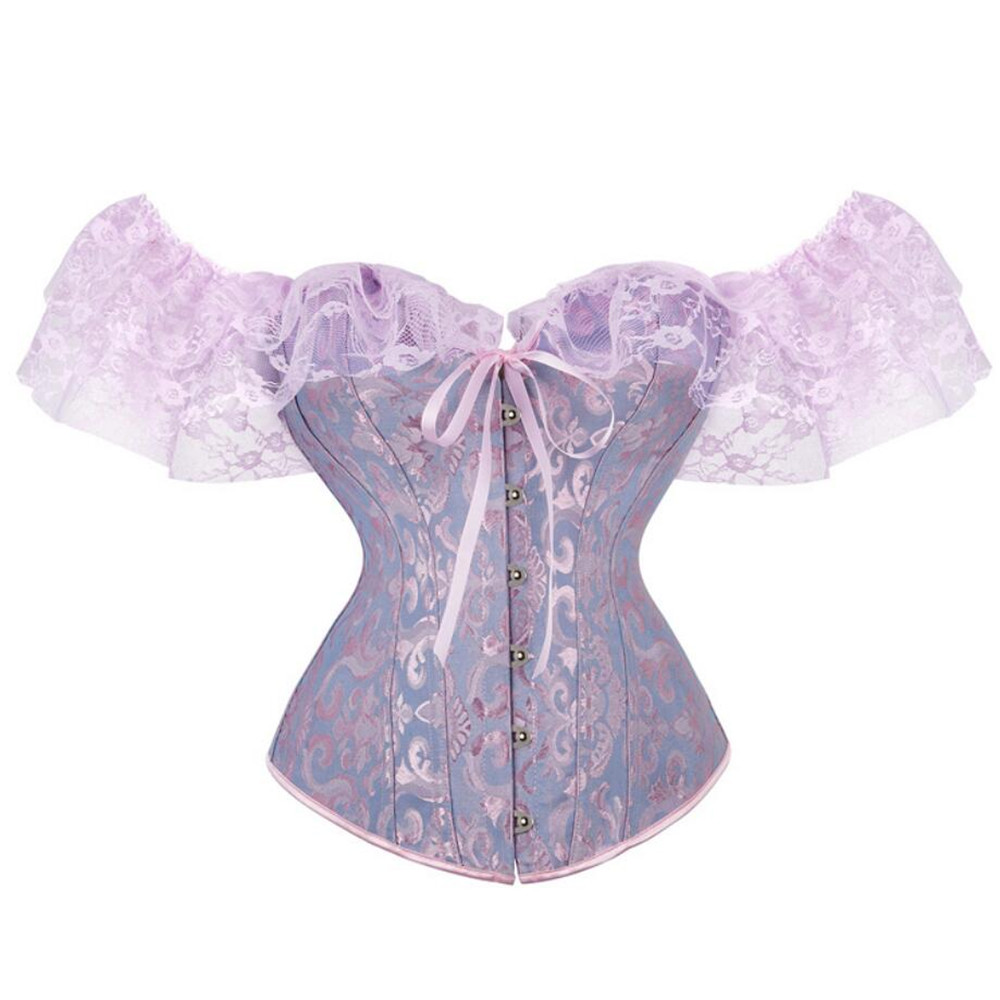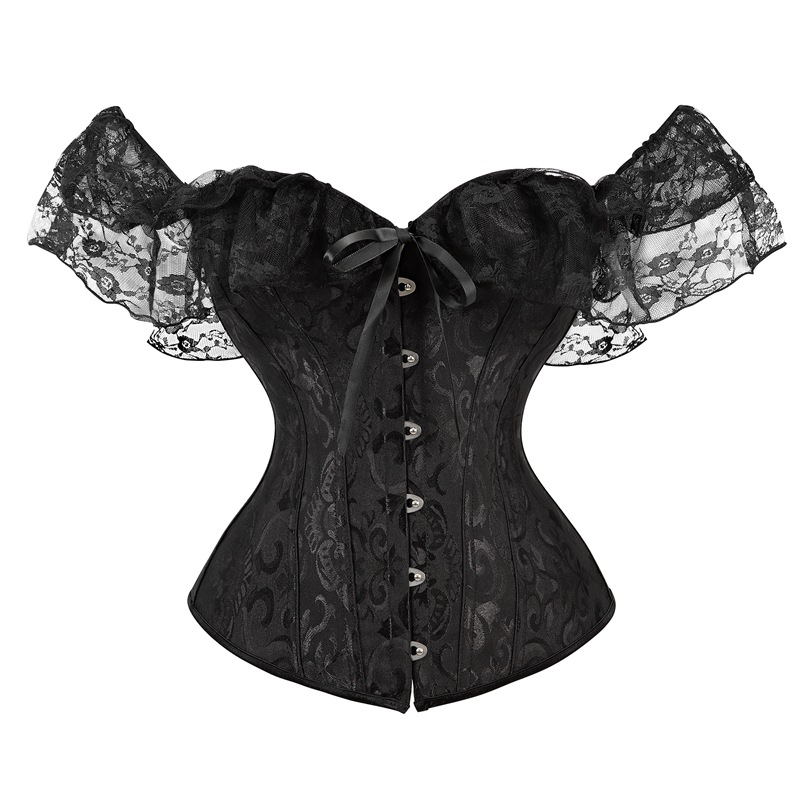Introduction to Corsets
Corsets have shaped bodies and fashion for centuries. They cinch the waist, providing support and an iconic silhouette. Today, they’re not just for waist training. Many enjoy corsets as stylish, confident-boosting pieces. There are several corset types, each with unique features and purposes. They range from emphasizing the bust to flattening the torso, fitting different body shapes and preferences.

From the tight-laced look of the Renaissance to the modesty of the Tavern Wench style, corsets evolve. Historical styles like the Elizabethan stays give us a Shakespearean flair. Meanwhile, modern corset belts offer an easy introduction to corset wearing. Whether seeking an underbust for an hourglass shape or a high back bodice for historical accuracy, options abound.
Understanding corset types helps select the best fit for your body and style. In this guide, we dive into various corset styles for different body types. Comfort, style, and supportive features are important. Fabrics play a role too, from breathable linens to luxurious velvets. By the end of this guide, you’ll understand which corset types match your style and body type.
The Renaissance Bodice and Its Features
The Renaissance period redefined fashion with the Renaissance Bodice, a pivotal garment of the time. Emphasizing a rounder bust shape, it contrasted with the flatter silhouettes of earlier styles. These bodices showcased a characteristic scooping neckline and a pointy waistline, designed to celebrate feminity and enhance the wearer’s figure.
Typically, the Renaissance Bodice provided ample cleavage and unrivaled bust support. Key to its design were the strategically placed boning and the fabric choice. For plus-sized individuals, experts often suggest thicker and stronger fabrics like tapestry or velvet to ensure both comfort and the desired aesthetic.
Less boning than other styles means fabric choice plays a crucial role in the bodice’s structure. Light boning can be an advantage, offering flexibility and a more natural shape under clothing. Linen, a popular material, offers breathability and durability in these bodices, while avoiding less supportive materials like silk or satin is often recommended.
For those looking for support alongside maximum cleavage, the Renaissance Bodice stands as an ideal option. Its low neckline paired with the pointy waist produces an attractive silhouette that has continued to capture favor across the centuries.
Underbust Bodice for a Classic Tavern Wench Look
The Underbust Bodice is key for achieving the ‘Classic Tavern Wench’ style. This corset sits below the breasts, scooping under rather than over, and provides a modest silhouette without compressing the bust. Unlike other corset types, the Underbust Bodice allows for a more relaxed fit while still enhancing the waist.
This style is perfect if you are seeking minimal cleavage but still want substantial support. Many wearers find they can comfortably forego a bra with this style, thanks to the light support it offers. Yet, for added support or modesty, pairing it with a bra is also a great option.
Plus-sized individuals may prefer this style as it lends a flattering shape without additional bust coverage. The Underbust Bodice works well for those desiring a corset that complements rather than changes their body’s natural contour. Its versatile design makes it an excellent choice for outerwear or as a base piece for layering costumes or everyday attire.
In short, the Underbust Bodice is for those who favor modesty and comfort without sacrificing the corset’s classic waist-defining qualities. It remains a timeless choice within the corset family, admired for its blend of practicality and style.

Elizabethan Stays: Achieving the Shakespearean Aesthetic
Elizabethan stays are key for that classic Shakespearean look. Drawing inspiration from the 16th century, they create a distinct conical or triangular torso shape. Unlike the hourglass silhouette common in traditional corsetry, these stays are about structured support.
Characterized by firm boning and a straight-lined bodice, Elizabethan stays are best for a pushed-up bust shape. They lack the rounding bust effect of the Renaissance Bodice. Yet, the low neckline allows for ample cleavage display.
Back lacing is a unique feature of these stays, adding to the supportive fit. The absence of front lacing means a smoother front and a focus on the body’s natural lines. For those desiring a historical and structured garment, Elizabethan stays are perfect.
Plus-sized admirers will find favor in the strong shape provided by these stays. They offer reliable structure and enhance the body’s natural curves. Their design is a nod to times past, while remaining a popular choice for its flattering fit.
Tudor Stays: For a Structured and Supportive Shape
Tudor stays reflect the regal elegance of the Tudor dynasty. With added boning compared to Elizabethan stays, they offer maximum bust support. This style suits those who favor a less revealing look while maintaining support.
The high neckline characteristic of these stays not only adds extra coverage but also aligns with the knightcore aesthetic. It’s ideal for those seeking a historical vibe without foregoing comfort and assurance.
For individuals who are plus-sized, this corset type comes highly recommended. It provides a structured, uplifting shape that enhances natural body contours. The additional boning ensures support throughout the day.
Whether for reenactment, costume wear, or just a preference for substantial support, Tudor stays cater to various needs. They meld historical design with contemporary support, making them a versatile and timeless choice.
18th Century Stays: Combining Elizabethan and Tudor Elements
18th Century stays blend Elizabethan shape with Tudor support. This style echoes late 1700s fashion. Think Marie Antoinette and Outlander for inspiration. It has a structured silhouette that flatters the figure.
These stays have a lower neckline and create an elongated waist. They show off a ruffled lace chemise beautifully. Plus-sized wearers appreciate its supportive design. The stays partially bone, offering ample support.
Waist tabs give this corset a unique look. For those fond of historical attire, this is a charming option. It’s good for a structured, appealing body outline. Plus sizes find this type both flattering and comfortable.
The 18th Century stays are a mix of old world charm and modern need. They balance support with style, suitable for historical events or modern wear. If you like a corset that commands attention, consider this style.
High Back Corset Bodice: Historical Accuracy
The High Back Corset Bodice stands out for its nod to historical authenticity. It boasts a tall back reaching upward, reminiscent of styles from the past. This corset has fixed straps and a high-rising neckline. As in historical bodices, the cut offers additional coverage, ideal for those looking for a modest yet structured look.
This type of corset is perfect for reenactors or anyone who appreciates the look of vintage fashion. It’s also well-suited for formal events where a sophisticated and period-accurate outfit might be preferred. Plus-sized individuals often seek out this style for its supportive construction and classic aesthetic.
The High Back Corset Bodice provides a unique blend of old-world elegance and support. It’s made using sturdy materials and has a more rigid structure, enhancing silhouette while honoring the styles of bygone eras. The design is timeless, offering both the sleek lines desired in modern corsetry and the historical accuracy cherished by enthusiasts.
Overall, if historical accuracy paired with a supportive and refined structure is what you’re seeking, the High Back Corset Bodice could be the ideal choice. It delivers not just in terms of style, but also in comfort and support, suitable for various occasions and body types.
Corset Dresses for a Renaissance Inspired Look
Corset dresses merge structure with style. They embody the Renaissance with a built-in corset. This design gives the support of a corset while offering the elegance of a dress. They’re perfect for those who love layered looks.
These dresses often layer over a linen chemise. This nod to history adds charm and authenticity. The attached skirt simplifies dressing, cutting down on separate pieces. It provides a cost-effective solution to buying a full-bodied skirt.
Corset dresses come in various lengths and styles. They offer versatility for events, festivals, or daily wear. Plus-sized individuals appreciate the built-in corset’s sculpting effect. It accentuates curves while maintaining comfort.
For first-timers, a corset dress is an approachable option. It introduces corset wearing without committing to separates. It is perfect for a Renaissance fair or themed wedding. These dresses are functional, fashionable, and have a timeless appeal.
In conclusion, corset dresses combine beauty with practical support. They are ideal for achieving that Renaissance look with ease.
